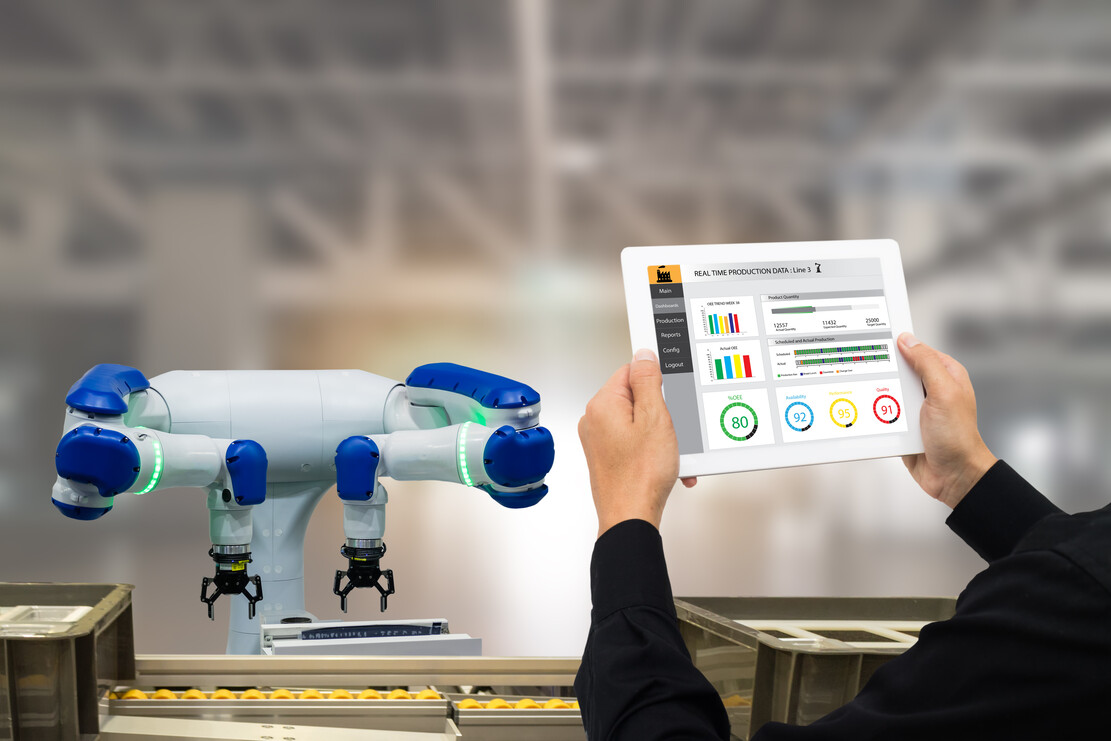ศาสตร์การวิเคราะห์ข้อมูล (Data Analytics) สามารถแปลงข้อมูลดิบเป็นข้อมูลเชิงลึกที่นำไปใช้ได้จริง Data Analytics ครอบคลุมเครื่องมือ เทคโนโลยี และกระบวนการต่างๆ เพื่อค้นหาเทรนด์ และ แก้ไขปัญหาโดยใช้ข้อมูล Data Analytics สามารถปรับสร้างแบบกระบวนการทางธุรกิจ ปรับปรุงการตัดสินใจ และส่งเสริมการเติบโตของธุรกิจ Data Analytics ช่วยให้บริษัทเข้าถึงมุมมองที่ไม่เคยเข้าถึงมาก่อน มีความเข้าใจกระบวนการและบริการของตนอย่างลึกซึ้งยิ่งขึ้น Data Analytics ให้ข้อมูลเชิงลึกโดยละเอียดเกี่ยวกับประสบการณ์ของลูกค้าและปัญหาของลูกค้า
อ้างอิงจาก Amazon Web Service (AWS) ศาสตร์ Big Data Analytics ประกอบด้วยห้าขั้นตอนเพื่อวิเคราะห์ชุดข้อมูลขนาดมหึมา ได้แก่ การรวบรวมข้อมูล การจัดเก็บข้อมูล การประมวลผลข้อมูล การล้างข้อมูล และการวิเคราะห์ข้อมูล สำหรับการวิเคราะห์ข้อมูลนั้นเป็นขั้นตอนที่ข้อมูลดิบถูกแปลงเป็นข้อมูลเชิงลึกที่นำไปใช้ได้จริงและมีสี่ประเภท การวิเคราะห์เชิงพรรณนา (Descriptive Analytics) คือการทำความเข้าใจสิ่งที่เกิดขึ้นหรือกำลังเกิดขึ้นในสภาพแวดล้อมของข้อมูล โดยการนำเสนอในรูปแบบสื่อการมองเห็น เช่น แผนภูมิวงกลม แผนภูมิแท่ง กราฟเส้น ตาราง หรือเรื่องราวที่สร้างขึ้น การวิเคราะห์เชิงวินิจฉัย (Diagnostic Analytics) เป็นกระบวนการวิเคราะห์ข้อมูลแบบเจาะลึกหรือแบบละเอียดเพื่อทำความเข้าใจว่าเหตุใดจึงเกิดเหตุการณ์บางอย่างขึ้น โดยการใช้เทคนิคต่าง ๆ เชน การเจาะลึก การค้นพบข้อมูล การทำเหมืองข้อมูล และการหาความสัมพันธ์ภายในชุดข้อมูล

Credits: From insight to action: Making the most of predictive analytics consulting, N-iX
การวิเคราะห์เชิงคาดการณ์ (Predictive Analytics) อาศัยข้อมูลในอดีตเพื่อคาดการณ์แนวโน้มในอนาคตได้อย่างแม่นยำ โดยอาศัย การเรียนรู้ของเครื่อง การพยากรณ์ การจับคู่รูปแบบ และเทคนิคการสร้างแบบจำลองเชิงคาดการณ์ ทั้งนี้คอมพิวเตอร์จะถูกเทรนให้ทำวิศวกรรมย้อนกลับไปหาสาเหตุของประเด็นที่ปรากฎ การวิเคราะห์เชิงกำหนด (Prescriptive Analytics) เป็นการวิเคราะห์ข้อมูลเชิงคาดการณ์ขั้นสูงขั้นไปอีก โดย Prescriptive Analytics จะพยากรณ์เหตุการณ์ที่มีแนวโน้มจะเกิดขึ้น พร้อมคำแนะนำการรับมือกับเหตุการณ์ดังกล่าวอย่างเหมาะสม Prescriptive Analytics สามารถวิเคราะห์ผลกระทบที่อาจเกิดขึ้นจากตัวเลือกต่าง ๆ พร้อมแนะนำแนวทางที่ดีที่สุด โดยอาศัยเทคนิค เช่น การวิเคราะห์กราฟ การจำลอง การประมวลผลเหตุการณ์ที่ซับซ้อน โครงข่ายประสาทเทียม และกลไกการแนะนำ
การบำรุงรักษาเชิงคาดการณ์ (Predictive Maintenance) หรือ การวิเคราะห์การบำรุงรักษา (Maintenance Analytics) คือการประยุกต์ใช้งานการวิเคราะห์เชิงคาดการณ์ การบำรุงรักษาเชิงคาดการณ์ (Predictive Maintenance) เป็นกลยุทธ์การบำรุงรักษาตามเงื่อนไขที่ถึงกำหนดการบำรุงรักษาจริงเท่านั้น ในขณะที่การบำรุงรักษาเชิงป้องกัน (Preventive Maintenance) เป็นแนวคิดการบำรุงรักษาตามกำหนดเวลาอย่างสม่ำเสมอโดยไม่คำนึงถึงสภาพของอุปกรณ์ จุดนี้เองเป็นบ่อเกิดของความสูญเสียทรัพยากรเป็นจำนวนมาก เนื่องจากจะทำให้ชิ้นส่วนที่ยังทำงานได้อยู่ในสภาพดีถูกเปลี่ยนหรือซ่อมแซมโดยไม่จำเป็น

Credits: Predictive Maintenance & Asset Management With Advanced Data Analytics, Sharmishtha Patwardhan, GSLAB
ตรงกันข้ามกับการบำรุงรักษาเชิงป้องกัน การบำรุงรักษาเชิงโต้ตอบหรือเชิงแก้ไข (Reactive or Corrective Maintenance) คือการซ่อมแซมที่เกิดขึ้นเมื่อเกิดปัญหาเท่านั้น นี่อาจดูเหมือนเป็นวิธีแก้ปัญหาที่ชัดเจนที่สุด แต่จริง ๆ แล้วอาจมีค่าใช้จ่ายสูงและเกิดผลกระทบกระเทือนต่อการผลิตได้ ทั้งนี้เพราะเมื่อปัญหาที่ได้เกิดขึ้นแล้ว ก็อาจสายเกินไปหลีกเลี่ยงไม่ได้ที่จะต้องหยุดการทำงานกระทันหัน (Unplanned Downtime) ในสายการผลิต การบำรุงรักษาเชิงคาดการณ์มีข้อดีของทั้งแนวคิดการบำรุงรักษาเอาไว้ด้วยกัน โดยไม่มีข้อเสียใด ๆ กล่าวคือการใช้ข้อมูลและการวิเคราะห์ช่วยให้เราสามารถดำเนินการบำรุงรักษาเมื่อจำเป็น หลีกเลี่ยงการสูญเสียที่เกี่ยวข้องกับการบำรุงรักษาเชิงป้องกันและการหยุดทำงานกระทันด้วยวิธีการบำรุงรักษาเชิงโต้ตอบ

Credits: What is predictive maintenance? SensorFact
จากรายงานของ Research Nester คาดว่าตลาดการบำรุงรักษาเชิงคาดการณ์ทั่วโลกจะสร้างรายได้ถึง 81,582.5 ล้านเหรียญสหรัฐภายในสิ้นปี 2031 โดยการเติบโตที่ CAGR ที่ 31.9% ในช่วงปี 2022 – 2023 นอกจากนี้ ตลาดยังสร้างรายได้ 5,261.4 ล้านเหรียญสหรัฐใน 2021 การเติบโตของตลาดเป็นผลมาจากความต้องการที่จะลด Downtime และลดค่าบำรุงรักษา การบำรุงรักษาแบบคาดการณ์ชี้บ่งช่วงเวลาที่ดีที่สุดเพื่อการบำรุงรักษาอุปกรณ์ ทำให้เกิดความคุ้มค่า ลดความสิ้นเปลืองทั้งเวลาและทรัพยากรในกรณีที่เครื่องจักรเสียหาย ทุกวันนี้ โรงงานขนาดใหญ่สูญเสียชั่วโมงการผลิตโดยเฉลี่ย 323 ชั่วโมงต่อปี ก่อให้เกดต้นทุนเฉลี่ยของการสูญเสียการขาย ค่าปรับ เวลาหยุดทำงานของพนักงาน และการรีสตาร์ทสายการผลิตอยู่ที่ 532,000 เหรียญสหรัฐต่อชั่วโมงหรือ 172 ล้านเหรียญสหรัฐต่อโรงงานต่อปี

Credits: Predictive Maintenance: Servicing tomorrow and where we are really at today, Roland Berger GMBH
คาดว่าตลาดการบำรุงรักษาเชิงคาดการณ์ในเอเชียแปซิฟิกเมื่อเทียบกับภูมิภาคอื่นแล้ว จะมีรายได้สูงสุดที่ 23,985.2 ล้านเหรียญสหรัฐ ภายในสิ้นปี 2031 ตลาดของภูมิภาคจะเติบโตที่ CAGR สูงสุดที่ 35.4% ตลอดระยะเวลาคาดการณ์ โดยตลาดเอเชียแปซิฟิกมีทำรายได้ไปแล้วที่ 1,183.8 ล้านเหรียญสหรัฐในปี 2021 ปัจจัยหลักส่งผลต่อการเติบโตของตลาดมาจากการแทรกซึมทางดิจิทัลเข้าสู่บริษัทห้างร้านองค์กร พบว่าประมาณ 70% ของธุรกิจองค์กรขนาดใหญ่และกลางในภูมิภาค APAC มีกลยุทธ์ Digital Transformation โดยไต้หวันเป็นผู้นำกลุ่ม ซึ่งแสดงถึงการเพิ่มขึ้นจากปี 2020 ซึ่งการสูญเสีย 57% คาดว่าจะช่วยกระตุ้นการเติบโตของตลาด

Credits: Predictive Maintenance Market Size & Share – Global Supply & Demand Analysis, Growth Forecasts, Statistics Report 2023 – 2031, Precedence Research

Credits: Predictive Maintenance Market Size & Share – Global Supply & Demand Analysis, Growth Forecasts, Statistics Report 2023 – 2031, Research Nester
Article by: Asst. Prof. Suwan Juntiwasarakij, Ph.D., Senior Editor & MEGA Tech












